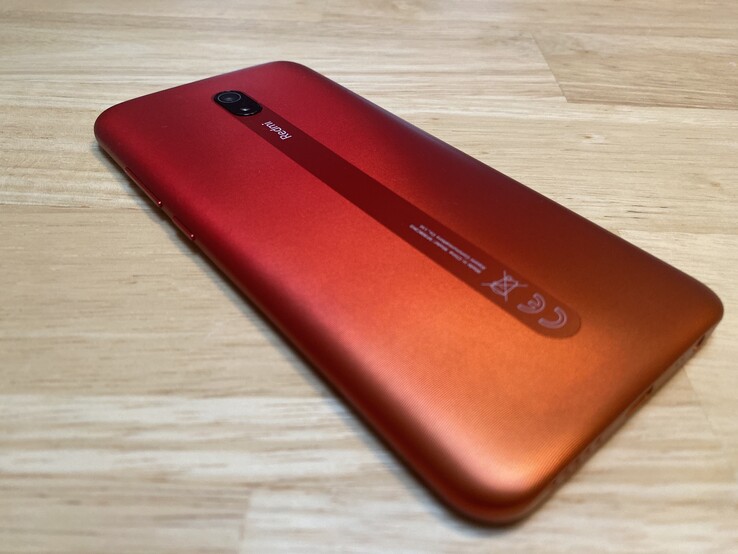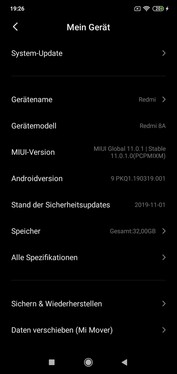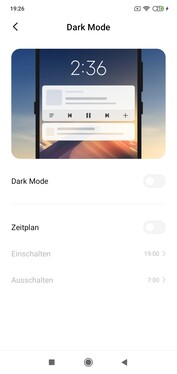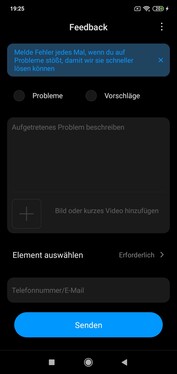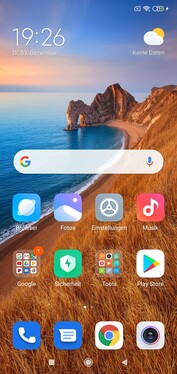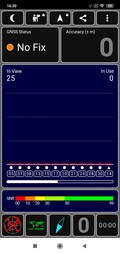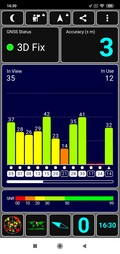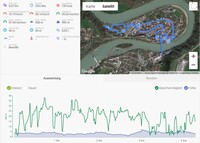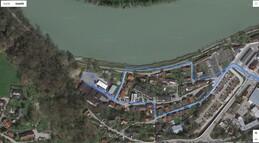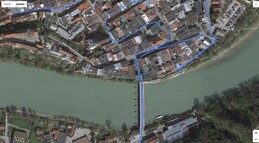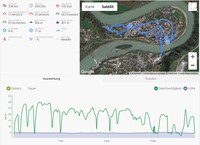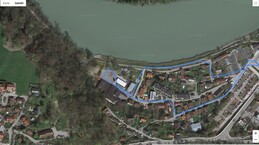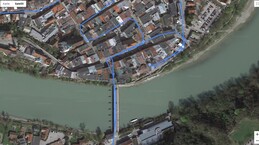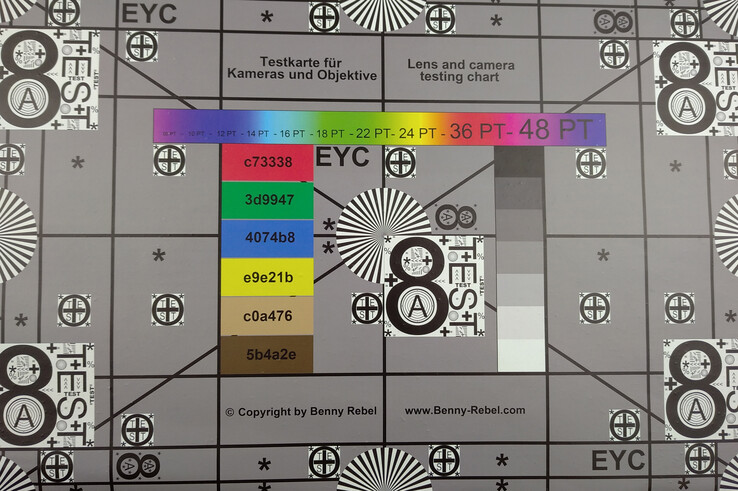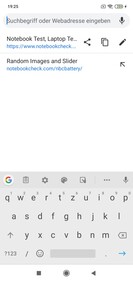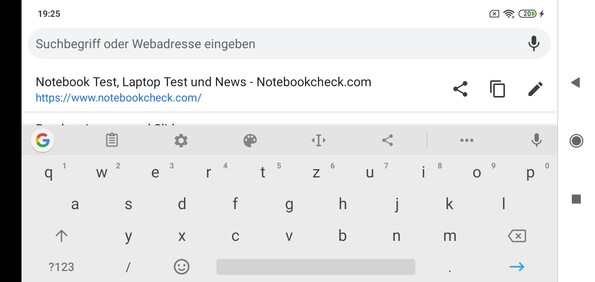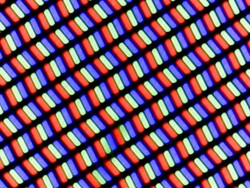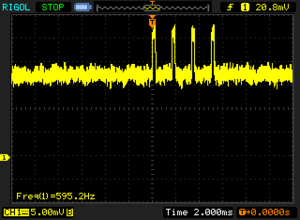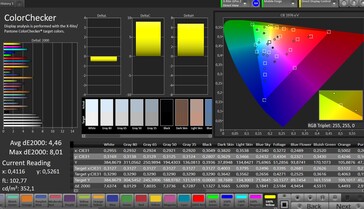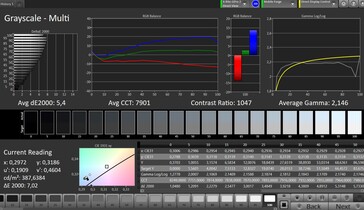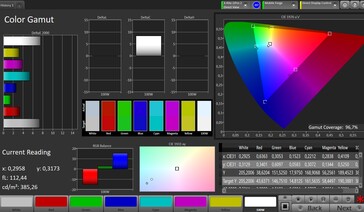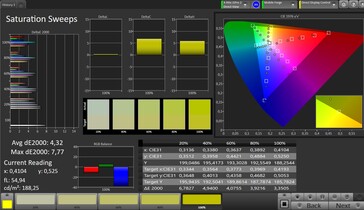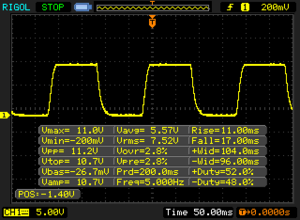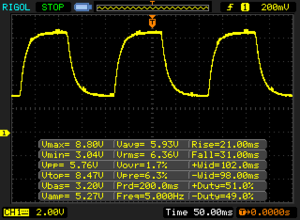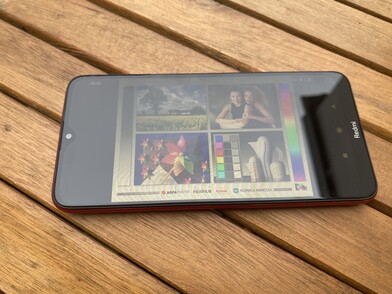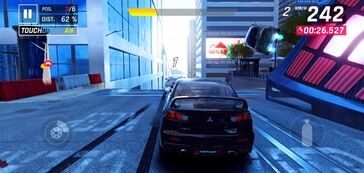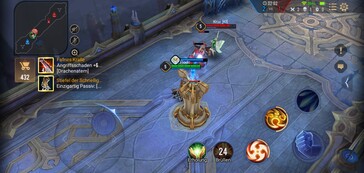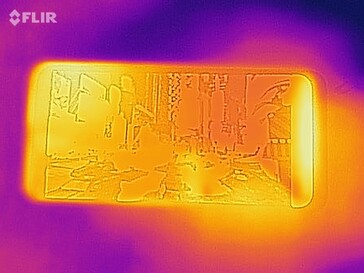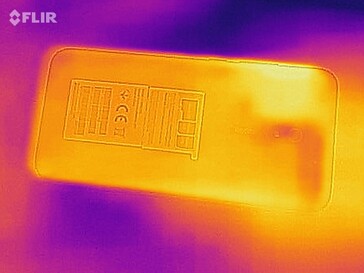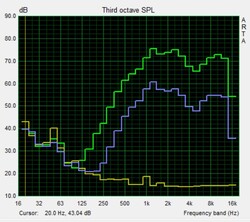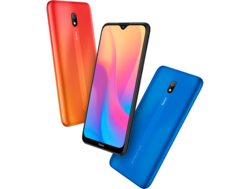Xiaomi Redmi 8A smartphone review – Large battery, small price
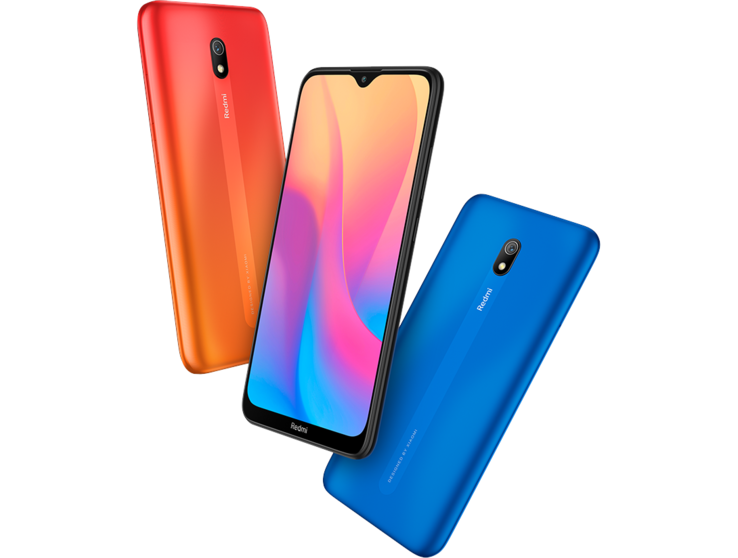
If you're looking for a very cheap smartphone for around 100 (~$111) - 120 Euros (~$133), you can't go around at least including Xiaomi's Redmi devices in the selection: They simply offer a lot for this tight budget. The Redmi 6A and Redmi 7A already offered a very good price-performance ratio.
Larger battery, more storage, bigger screen, higher price: The Xiaomi Redmi 8A is more an extension of the model range than a successor to the Redmi 7A, since both can coexist well at first glance: Users preferring something lighter and more manageable will take the 7A; those who favor a more modern design will pay a few Euros more and pick the Redmi 8A.
But are the calculations really that easy? Is the Redmi 8A as successful as its predecessors? We test this in our detailed review.
Comparison devices
Rating | Version | Date | Model | Weight | Drive | Size | Resolution | Price |
|---|---|---|---|---|---|---|---|---|
| 74.5 % v7 (old) | v7 (old) | 12 / 2019 | Xiaomi Redmi 8A SD 439, Adreno 505 | 188 g | 32 GB eMMC Flash | 6.22" | 1520x720 | |
| 82.6 % v6 (old) | v6 (old) | 08 / 2019 | Xiaomi Redmi 7A SD 439, Adreno 505 | 165 g | 16 GB eMMC Flash | 5.45" | 1440x720 | |
| 72.8 % v7 (old) | v7 (old) | 06 / 2019 | Huawei Y5 2019 Helio A22 MT6761, PowerVR GE8300 | 146 g | 16 GB eMMC Flash | 5.71" | 1520x720 | |
| 74.9 % v7 (old) | v7 (old) | 08 / 2019 | Samsung Galaxy A10 Exynos 7884B, Mali-G71 MP2 | 168 g | 32 GB eMMC Flash | 6.20" | 1520x720 | |
| 74.9 % v7 (old) | v7 (old) | 11 / 2019 | Motorola Moto E6 Plus Helio P22 MT6762, PowerVR GE8320 | 149.7 g | 32 GB eMMC Flash | 6.10" | 1560x720 |
Case – Fire red plastic
The Xiaomi Redmi 8A is available in plain black, obviously. But much more interesting, of course, are the red and blue versions, which bring color into the dull everyday life of smartphones. Our test device in red certainly attracts the most attention because it features a slight gradient into orange, along with a wave pattern at the back and a silky-matte finish. Overall, we like the design very much, especially for the price range; it looks very high quality.
The Xiaomi phone sits well in the hand, but it's one of the heavier devices at 188 grams. This is probably due to the 5,000 mAh high-capacity battery. The smartphone is also stable: Pressure on the front comes through to the screen, but the case can't be twisted, and the back can't be pressed in.
Connectivity – A lot of storage in the Redmi phone
The Redmi 8A actually costs 119.90 Euros (~$133) but is currently offered a few Euros cheaper on the Internet. The Redmi 7A can be bought for around 100 Euros (~$111).
The times of 16 GB of storage seem to be numbered, at least in the Redmi series: The Redmi 8A is only offered with a minimum of 32 GB of storage, and there's even a version with 64 GB internationally. In addition, there's 2 GB of RAM, which is standard in the price range.
Storage can be expanded via microSD; there's even a separate slot for the card so that the dual-SIM slots remain untouched. Cards formatted in exFAT format can't be read. Xiaomi has also done without a DRM certification so that you can only view the streaming content of many portals in SD quality.
Xiaomi has also transitioned to a USB-C port with the Redmi 8A. However, it still only supports USB 2.0 speeds. An FM radio receiver is also installed, and nostalgic audio fans are well catered for with a 3.5 mm audio jack.
Software – Almost a sensation
The Xiaomi Redmi 8A actually comes with MIUI 10, which is based on Android 9. Shortly after starting our review, the smartphone notifies us of an update to MIUI 11. The user receives with it up-to-date security patches, in our case from November 1, 2019; it doesn't get any safer than that at the time of conducting the review. If you're excited about immediately receiving Android 10 on your super-cheap smartphone, we have to give you some disappointing news: Although MIUI 11 comes with Android 10 on some smartphones, it is a bit of a sham package and can also be delivered with Android 9 as with the Redmi 8A.
Xiaomi installs some advertising apps, but fortunately, they can be completely uninstalled if you don't need them and therefore don't take up unnecessary storage space.
Communication and GPS – At class level
The maximum LTE speeds of the Xiaomi smartphone are not very high, but this is also not to be expected in this price range. The reception is good in the urban environment outdoors; in buildings it's mediocre. There's a little more than the bare necessities in regard to LTE frequencies so that you could still have access to the LTE network in some more distant countries. But the Xiaomi Redmi 8A is certainly not a world phone.
The Wi-Fi speeds are also at the usual level for the class; we determine this in our tests with the Linksys Nighthawk AX12 reference router. Close to the router, you have full reception, and websites load reasonably fast; you have to wait for pictures to load for a short time. At a distance of 10 meters and through three walls, the reception is still completely given according to the indicator on the display, but you have to wait noticeably longer for pictures.
| Networking | |
| iperf3 transmit AX12 | |
| Huawei Y5 2019 | |
| Xiaomi Redmi 8A | |
| Xiaomi Redmi 7A | |
| Samsung Galaxy A10 | |
| Motorola Moto E6 Plus | |
| iperf3 receive AX12 | |
| Motorola Moto E6 Plus | |
| Huawei Y5 2019 | |
| Xiaomi Redmi 7A | |
| Xiaomi Redmi 8A | |
| Samsung Galaxy A10 | |
The location module of the Redmi 8A isn't able to locate us in buildings. But outdoors, the accuracy increases quite quickly to a good three meters. The location in Google Maps is accurate to a few meters; the compass works quite well.
In our practical navigation test, a bike ride to which we also take the professional Garmin Edge 520 navigator, the Redmi 8A appears to act in a nervous manner. The location jumps repeatedly next to the road. Overall, however, the route is still comprehensible, and if you don't need exact navigation data, you can use the Redmi phone for navigation with ease.
Telephone and call quality – Easy to understand
Xiaomi uses Google's standard app for telephony. Whether VoLTE and VoWiFi are enabled can be asked via codes that can be entered into the telephone dialer; our colleagues from chinahandys.net have these available on their website (in German). In principle, the smartphone supports both options.
The conversation quality is quite good both over the internal earpiece and over the speaker. There's a clear noise with the earpiece, but it can be set quite loud, and the sound is good in itself. The microphone also pleases with fairly clear recording, even with quieter voices. The person at the other end sounds quite clear via speaker, and they can also hear us well too, even if we don't speak so loudly.
Cameras – Higher resolution on the front side
The 12-megapixel camera has the same resolution as the Xiaomi Redmi 7A but is a little more light-sensitive. You shouldn't expect too much from a 100-Euro (~$111) smartphone when it comes to the camera, but the Redmi 8A makes a fair effort and at least does a pretty good job at brightening. Nonetheless, there are clear blurs in the picture even without zooming in; there's a visible blue tint and bright areas quickly lose details. The surrounding image appears rather faintly brightened and is quite grainy in detail. In low light, the reproduction is actually passable, but the camera generates a clear red tint here.
Videos can be recorded in 1080p and 30 fps. Unfortunately, the autofocus creates a visible wobble when focusing, but in itself, we really like the speed of the changes to exposure and also the image quality for the price range.
At 8 megapixels, the front-facing camera has a higher resolution than the Redmi 7A now, but the images are rather not suitable for magnification.
Our test chart, which we look at in the laboratory under very good lighting conditions, looks blurry and it also loses contrast towards the edges. Text against a colored background appears slightly blurred, and color transitions are somewhat pixelated. For the price range, however, the quality isn't so bad.
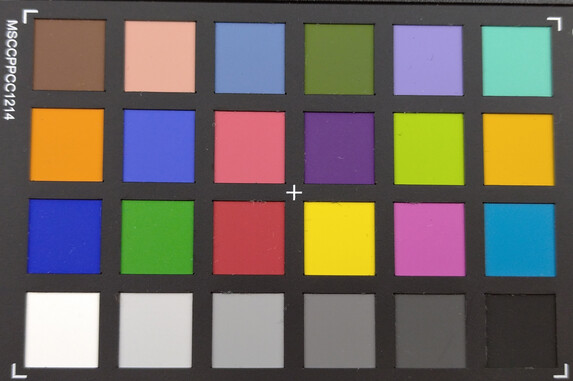
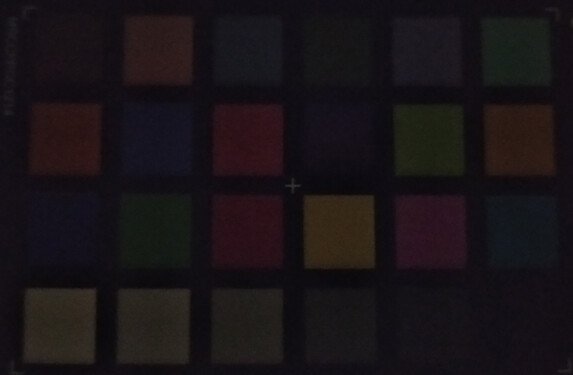
Accessories and warranty – No fast charger included
Xiaomi only includes the essential accessories in the package: A charger with a capacity of 10 watts, a USB cable and a SIM tool.
Xiaomi offers a 12-month warranty, but at the moment, at least in Germany, you can't contact the manufacturer directly; the dealer must be contacted instead. If you have purchased your device within the EU, there is, of course, also 24 months of dealer warranty.
Input devices and handling – No fingerprint scanner in the Redmi 8A
The touch-sensitive screen is quite accurate and provides a pleasant surface. In terms of hardware buttons, there's only the volume rocker and the power button; they have a clear pressure point and are easy to find. Using the buttons works well, and they feel on par with the class level, which means that they could be of higher quality.
The Xiaomi Redmi 8A doesn't have a fingerprint scanner, but you can use facial recognition, which works fast and quite reliably.
Display – Not that bright
At 1520x720 pixels, the Redmi 8A is at the class level in terms of resolution. Furthermore, there's a lot of display area available due to the small waterdrop notch at the top.
Even if we fully expose the Redmi 8A's brightness sensor, the brightness of the display doesn't increase above 421 cd/m² on average. This is a rather moderate value; the Redmi 7A, for example, offers a much brighter display when needed.
| |||||||||||||||||||||||||
Brightness Distribution: 89 %
Center on Battery: 441 cd/m²
Contrast: 1161:1 (Black: 0.38 cd/m²)
ΔE ColorChecker Calman: 4.46 | ∀{0.5-29.43 Ø4.79}
ΔE Greyscale Calman: 5.4 | ∀{0.09-98 Ø5}
96.7% sRGB (Calman 2D)
Gamma: 2.146
CCT: 7901 K
| Xiaomi Redmi 8A IPS, 1520x720, 6.2" | Xiaomi Redmi 7A IPS, 1440x720, 5.5" | Huawei Y5 2019 IPS, 1520x720, 5.7" | Samsung Galaxy A10 IPS, 1520x720, 6.2" | Motorola Moto E6 Plus IPS, 1560x720, 6.1" | |
|---|---|---|---|---|---|
| Screen | -18% | -11% | 1% | 9% | |
| Brightness middle (cd/m²) | 441 | 533 21% | 630 43% | 451 2% | 453 3% |
| Brightness (cd/m²) | 421 | 506 20% | 593 41% | 430 2% | 440 5% |
| Brightness Distribution (%) | 89 | 88 -1% | 88 -1% | 90 1% | 86 -3% |
| Black Level * (cd/m²) | 0.38 | 0.6 -58% | 0.66 -74% | 0.22 42% | 0.14 63% |
| Contrast (:1) | 1161 | 888 -24% | 955 -18% | 2050 77% | 3236 179% |
| Colorchecker dE 2000 * | 4.46 | 5.6 -26% | 5.79 -30% | 5.44 -22% | 7.2 -61% |
| Colorchecker dE 2000 max. * | 8.01 | 11.4 -42% | 9.54 -19% | 11.94 -49% | 12.7 -59% |
| Greyscale dE 2000 * | 5.4 | 7.4 -37% | 7 -30% | 7.8 -44% | 8.4 -56% |
| Gamma | 2.146 103% | 2.212 99% | 2.176 101% | 2.206 100% | 1.95 113% |
| CCT | 7901 82% | 7974 82% | 8420 77% | 9149 71% | 8296 78% |
* ... smaller is better
Screen Flickering / PWM (Pulse-Width Modulation)
| Screen flickering / PWM detected | 595 Hz | ≤ 15 % brightness setting | |
The display backlight flickers at 595 Hz (worst case, e.g., utilizing PWM) Flickering detected at a brightness setting of 15 % and below. There should be no flickering or PWM above this brightness setting. The frequency of 595 Hz is quite high, so most users sensitive to PWM should not notice any flickering. In comparison: 53 % of all tested devices do not use PWM to dim the display. If PWM was detected, an average of 8167 (minimum: 5 - maximum: 343500) Hz was measured. | |||
The black value is average at 0.38 cd/m², as is the contrast ratio of 1161:1. In our tests with the CalMAN software and the spectral photometer, however, we measure relatively small color deviations so that you can at least roughly identify the colors of photos that are to be printed later. A clear blue tint is present in the display.
According to CalMAN, the sRGB color space is covered to some extent, whereby our measurement provides rather a point of reference here. If you want to work with larger color spaces, you probably also have to resort to higher-quality smartphones.
Display Response Times
| ↔ Response Time Black to White | ||
|---|---|---|
| 28 ms ... rise ↗ and fall ↘ combined | ↗ 11 ms rise | |
| ↘ 17 ms fall | ||
| The screen shows relatively slow response rates in our tests and may be too slow for gamers. In comparison, all tested devices range from 0.1 (minimum) to 240 (maximum) ms. » 70 % of all devices are better. This means that the measured response time is worse than the average of all tested devices (20.3 ms). | ||
| ↔ Response Time 50% Grey to 80% Grey | ||
| 52 ms ... rise ↗ and fall ↘ combined | ↗ 21 ms rise | |
| ↘ 31 ms fall | ||
| The screen shows slow response rates in our tests and will be unsatisfactory for gamers. In comparison, all tested devices range from 0.165 (minimum) to 636 (maximum) ms. » 88 % of all devices are better. This means that the measured response time is worse than the average of all tested devices (31.7 ms). | ||
Outdoors, the smartphone performs averagely in accordance with the not-so-bright screen and the glossy surface. On bright days, you should rather resort to places in the shade, otherwise it will be exhausting for the eyes.
Thanks to the IPS display, the screen content is also easily recognizable from very flat angles, and there are hardly any color shifts.
Performance – Others are just as fast
The Snapdragon 439 is the same SoC as in the Redmi 7A. With it, the Redmi 8A achieves class-typical performance values, but it can't set itself apart from other devices. In practice, you shouldn't demand too much from the device since occasional stuttering is noticeable in everyday use. While the SoC in the 7A offered quite a lot of performance for the money for less than 100 Euros (~$111), the Redmi 8A, with its slightly more expensive entry price, only has a normal configuration.
| PCMark for Android | |
| Work performance score (sort by value) | |
| Xiaomi Redmi 8A | |
| Xiaomi Redmi 7A | |
| Huawei Y5 2019 | |
| Samsung Galaxy A10 | |
| Motorola Moto E6 Plus | |
| Average Qualcomm Snapdragon 439 (5880 - 6228, n=6) | |
| Work 2.0 performance score (sort by value) | |
| Xiaomi Redmi 8A | |
| Xiaomi Redmi 7A | |
| Huawei Y5 2019 | |
| Samsung Galaxy A10 | |
| Motorola Moto E6 Plus | |
| Average Qualcomm Snapdragon 439 (4412 - 4791, n=6) | |
The Redmi 8A can't achieve a properly ample performance in the browser benchmarks. The Samsung Galaxy A10, for example, is much faster here. Nevertheless, it's sufficient for average waiting times when accessing websites.
| Jetstream 2 - 2.0 Total Score | |
| Average of class Smartphone (23.8 - 387, n=153, last 2 years) | |
| Samsung Galaxy A10 (Chrome 76) | |
| Xiaomi Redmi 7A (Chrome 76) | |
| Average Qualcomm Snapdragon 439 (15.9 - 16.9, n=5) | |
| Xiaomi Redmi 8A (Chrome 78) | |
| Huawei Y5 2019 (Chrome 74) | |
| Motorola Moto E6 Plus (Chrome 77) | |
| JetStream 1.1 - Total Score | |
| Samsung Galaxy A10 (Chrome 76) | |
| Average Qualcomm Snapdragon 439 (25.3 - 27.1, n=6) | |
| Xiaomi Redmi 7A (Chrome 76) | |
| Xiaomi Redmi 8A (Chrome 78) | |
| Speedometer 2.0 - Result 2.0 | |
| Average of class Smartphone (15.2 - 643, n=131, last 2 years) | |
| Samsung Galaxy A10 (Chome 76) | |
| Xiaomi Redmi 7A (Chome 76) | |
| Average Qualcomm Snapdragon 439 (17.4 - 18.5, n=5) | |
| Xiaomi Redmi 8A (Chrome 78) | |
| Huawei Y5 2019 (Chome 74) | |
| WebXPRT 3 - Overall | |
| Average of class Smartphone (38 - 380, n=41, last 2 years) | |
| Samsung Galaxy A10 (Chrome 76) | |
| Average Qualcomm Snapdragon 439 (32 - 38, n=6) | |
| Huawei Y5 2019 (Chrome 74) | |
| Xiaomi Redmi 7A (Chrome 76) | |
| Xiaomi Redmi 8A (Chrome 78) | |
| Motorola Moto E6 Plus (Chrome 77) | |
| Octane V2 - Total Score | |
| Average of class Smartphone (2228 - 121337, n=199, last 2 years) | |
| Samsung Galaxy A10 (Chrome 76) | |
| Average Qualcomm Snapdragon 439 (4512 - 4958, n=6) | |
| Xiaomi Redmi 7A (Chrome 76) | |
| Huawei Y5 2019 (Chrome 74) | |
| Xiaomi Redmi 8A (Chrome 78) | |
| Motorola Moto E6 Plus (Chrome 77) | |
| Mozilla Kraken 1.1 - Total | |
| Motorola Moto E6 Plus (Chrome 77) | |
| Huawei Y5 2019 (Chrome 74) | |
| Xiaomi Redmi 7A (Chrome 76) | |
| Xiaomi Redmi 8A (Chrome 78) | |
| Average Qualcomm Snapdragon 439 (9768 - 10143, n=6) | |
| Samsung Galaxy A10 (Chrome 76) | |
| Average of class Smartphone (257 - 28190, n=154, last 2 years) | |
* ... smaller is better
With our Toshiba reference microSD, an Exceria Pro M501, we test the read and write speeds of the card reader. They are decent and at class level. The eMMC memory also offers quite typical speeds and is sometimes even a bit faster than other devices.
| Xiaomi Redmi 8A | Xiaomi Redmi 7A | Huawei Y5 2019 | Samsung Galaxy A10 | Motorola Moto E6 Plus | Average 32 GB eMMC Flash | Average of class Smartphone | |
|---|---|---|---|---|---|---|---|
| AndroBench 3-5 | -17% | -16% | -3% | -2% | -8% | 1160% | |
| Sequential Read 256KB (MB/s) | 282 | 258 -9% | 272.1 -4% | 296.4 5% | 277.7 -2% | 242 ? -14% | 2207 ? 683% |
| Sequential Write 256KB (MB/s) | 106.4 | 68.7 -35% | 45.2 -58% | 101.7 -4% | 106.1 0% | 100.5 ? -6% | 1822 ? 1612% |
| Random Read 4KB (MB/s) | 73.1 | 57.8 -21% | 62.1 -15% | 73.4 0% | 61.7 -16% | 43.1 ? -41% | 292 ? 299% |
| Random Write 4KB (MB/s) | 15.8 | 9.6 -39% | 13.1 -17% | 13.3 -16% | 17.41 10% | 22.3 ? 41% | 339 ? 2046% |
| Sequential Read 256KB SDCard (MB/s) | 84.9 ? | 85.2 ? 0% | 81.8 ? -4% | 78.8 ? -7% | 82.5 ? -3% | 71.8 ? -15% | |
| Sequential Write 256KB SDCard (MB/s) | 61.7 ? | 64.6 ? 5% | 63.1 ? 2% | 65.3 ? 6% | 62.3 ? 1% | 52.9 ? -14% |
Games – 30 fps in some games
With the Redmi 8A, gaming is only possible at a maximum of 30 fps, at least in the games we tested. Arena of Valor also reaches this quite reliably, while the more-demanding racing game Asphalt 9 only comes close to 30 fps at low settings. At high details you can see the low frame rates quite clearly. Furthermore, you shouldn't run other apps in the background during gaming either.
Controlling games via the position sensor and touchscreen works without any problems.
Emissions – Heat development? What is that?
Temperature
There is no noticeable heat development under prolonged load; the smartphone stays cool at all times.
With the GFXBench battery test, we can check how the SoC behaves under prolonged high load and find that there is only a minimal decrease in frame rates, which means that maximum power is still available even after prolonged load.
(+) The maximum temperature on the upper side is 31.5 °C / 89 F, compared to the average of 35.2 °C / 95 F, ranging from 21.9 to 247 °C for the class Smartphone.
(+) The bottom heats up to a maximum of 32 °C / 90 F, compared to the average of 34 °C / 93 F
(+) In idle usage, the average temperature for the upper side is 26.3 °C / 79 F, compared to the device average of 32.9 °C / 91 F.
Speaker
In our test with the ARTA software, the speaker isn't quite as loud as with the Redmi 7A, but it still has a decent oomph to it. Sure, it can't compete with high-end smartphones in terms of sound quality, but in this class, you're actually much less used to what the Redmi 8A offers with its speaker: No distortion at maximum volume, tolerable highs and a reasonably balanced sound. In this way, you can even listen to a piece of music from time to time.
The fact that there is still a 3.5 mm connection will please all owners of the corresponding headphones; the sound output is clean, as well as over Bluetooth.
Xiaomi Redmi 8A audio analysis
(+) | speakers can play relatively loud (83.7 dB)
Bass 100 - 315 Hz
(-) | nearly no bass - on average 69.1% lower than median
(+) | bass is linear (0% delta to prev. frequency)
Mids 400 - 2000 Hz
(-) | nearly no mids - on average 69.1% lower than median
(+) | mids are linear (0% delta to prev. frequency)
Highs 2 - 16 kHz
(-) | nearly no highs - on average 69.1% lower than median
(+) | highs are linear (0% delta to prev. frequency)
Overall 100 - 16.000 Hz
(-) | overall sound is not linear (118% difference to median)
Compared to same class
» 87% of all tested devices in this class were better, 8% similar, 5% worse
» The best had a delta of 12%, average was 35%, worst was 134%
Compared to all devices tested
» 96% of all tested devices were better, 2% similar, 1% worse
» The best had a delta of 4%, average was 24%, worst was 134%
Xiaomi Redmi 7A audio analysis
(+) | speakers can play relatively loud (82 dB)
Bass 100 - 315 Hz
(-) | nearly no bass - on average 67.5% lower than median
(+) | bass is linear (0% delta to prev. frequency)
Mids 400 - 2000 Hz
(-) | nearly no mids - on average 67.5% lower than median
(+) | mids are linear (0% delta to prev. frequency)
Highs 2 - 16 kHz
(-) | nearly no highs - on average 67.5% lower than median
(+) | highs are linear (0% delta to prev. frequency)
Overall 100 - 16.000 Hz
(-) | overall sound is not linear (126.1% difference to median)
Compared to same class
» 96% of all tested devices in this class were better, 3% similar, 1% worse
» The best had a delta of 12%, average was 35%, worst was 134%
Compared to all devices tested
» 99% of all tested devices were better, 1% similar, 0% worse
» The best had a delta of 4%, average was 24%, worst was 134%
Battery life – The wall socket waits in vain
Energy consumption
Since the Redmi 7A and Redmi 8A each have the same SoC, similar energy consumption could be assumed. At 10%, the difference is actually not particularly high, but the Redmi 8A generally requires a little more energy, probably due to the larger screen area.
| Off / Standby | |
| Idle | |
| Load |
|
Key:
min: | |
| Xiaomi Redmi 8A 5000 mAh | Xiaomi Redmi 7A 4000 mAh | Huawei Y5 2019 3020 mAh | Samsung Galaxy A10 3400 mAh | Motorola Moto E6 Plus 3000 mAh | Average Qualcomm Snapdragon 439 | Average of class Smartphone | |
|---|---|---|---|---|---|---|---|
| Power Consumption | 10% | 1% | 5% | 24% | 1% | -19% | |
| Idle Minimum * (Watt) | 0.9 | 0.8 11% | 1.2 -33% | 0.7 22% | 0.57 37% | 0.82 ? 9% | 0.856 ? 5% |
| Idle Average * (Watt) | 1.8 | 1.6 11% | 1.9 -6% | 1.6 11% | 1.69 6% | 2.21 ? -23% | 1.437 ? 20% |
| Idle Maximum * (Watt) | 2.4 | 2.2 8% | 2.4 -0% | 2 17% | 1.72 28% | 2.49 ? -4% | 1.612 ? 33% |
| Load Average * (Watt) | 4.3 | 3.9 9% | 3.3 23% | 5.4 -26% | 3 30% | 3.78 ? 12% | 7.1 ? -65% |
| Load Maximum * (Watt) | 6 | 5.4 10% | 4.6 23% | 6 -0% | 4.88 19% | 5.24 ? 13% | 11.2 ? -87% |
* ... smaller is better
Battery life
At 5,000 mAh, the battery of the Redmi 8A has gotten really big; this is also noticeable in the 188 grams that the smartphone weighs. But there are also great runtimes of over 19 hours in our Wi-Fi test in return, which is 26% more than with the Redmi 7A. The Redmi 8A also beats the other comparison devices easily. Two workdays of continuous use shouldn't be a problem. Those who use their smartphone less could eventually even do without a wall socket for a week thanks to the low standby consumption.
According to Xiaomi, the smartphone supports fast charging up to 18 watts. But you have to buy a separate charger for this because the power adapter included in the box only delivers 10 watts and therefore takes a good 3 hours until the smartphone is recharged.
| Xiaomi Redmi 8A 5000 mAh | Xiaomi Redmi 7A 4000 mAh | Huawei Y5 2019 3020 mAh | Samsung Galaxy A10 3400 mAh | Motorola Moto E6 Plus 3000 mAh | |
|---|---|---|---|---|---|
| Battery runtime | -23% | -36% | -29% | -28% | |
| Reader / Idle (h) | 31.7 | 25.7 -19% | 20.9 -34% | 24.8 -22% | |
| H.264 (h) | 19.9 | 15 -25% | 12.2 -39% | 13.4 -33% | |
| WiFi v1.3 (h) | 19.1 | 14.2 -26% | 11.8 -38% | 12.6 -34% | 13.8 -28% |
| Load (h) | 6.1 | 4.8 -21% | 4.2 -31% | 4.6 -25% |
Pros
Cons
Verdict – Recommendable but not perfect
The Redmi 8A again offers a lot for its narrow budget: Very, very long battery life, a decent speaker, a modern and stable chassis, up-to-date security patches and quite a lot of storage. Sure, you need your own power adapter for the advertised quick-charging function, and the trick to deploy MIUI 11 but still only base it on Android 9 is almost audacious.
Location and Wi-Fi speeds are at class level, as is performance itself. Regarding the camera, there are quite worse models for a similar budget, so you can pull the purchase trigger with peace of mind here.
A cheap smartphone with a great configuration: The Xiaomi Redmi 8A is an obvious recommendation.
For just under 120 Euros (~$133), you can hardly get more for the money at the moment, but the Redmi 7A is the more impressive device at an even lower price and with only a small amount of shortcomings. But those looking for a bigger display and even longer battery life and who prefer the more modern design, can invest the almost 30 Euros (~$33) of the price premium with a clear conscience.
Xiaomi Redmi 8A
- 12/03/2019 v7 (old)
Florian Schmitt




